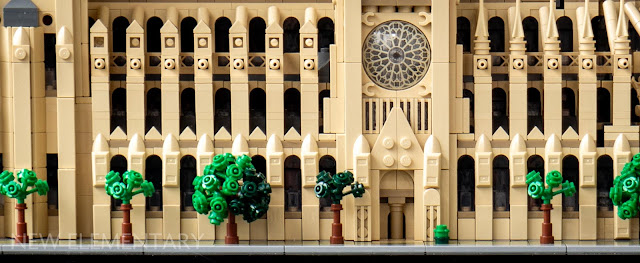In 1957, a LEGO® set numbered 1309 was released, depicting a white church built in 1762. 56 years later, in 2013, a set named 21015 The Leaning Tower of Pisa joined it, depicting the belfry of the Pisa Cathedral – more well-known than the cathedral itself. Two years later, St. Mark's Basilica was featured in set 21026 Venice. The LEGO Group has shown in recent times that religious buildings are not "banned" in its products, as is commonly thought. They are only very rare.
It is not hard to understand why real-world religious themes are uncommon in LEGO products. Firstly, there is banality of making commerce from religion, and it can lead to protest by interest groups. Secondly, there is the argument of equality: is presenting only certain religions unfair, shouldn't they all be equally cherished... and monetised? Religion often intervenes with politics and human rights, and is a sensitive and personal subject in its own right, too.
LEGO® Architecture 21061 Notre-Dame de Paris is a set that depicts a Catholic church building; undoubtedly the set and its subject have strong religious aspects. On the other hand, the existence of the cathedral itself is not in question and, aside from its main function, it has high value in terms of architectural history, cityscape, arts & crafts... and monetary value in global tourism and souvenirs such as scale models, magnets, puzzles and everything imaginable. The cathedral fell into decay until Victor Hugo's 1831 novel
The Hunchback of Notre-Dame raised it to a new level of awareness. A comprehensive restoration and redesign followed. Monetisation and depictions in non-religious contexts are nothing new to Notre-Dame de Paris.

.jpeg)


















